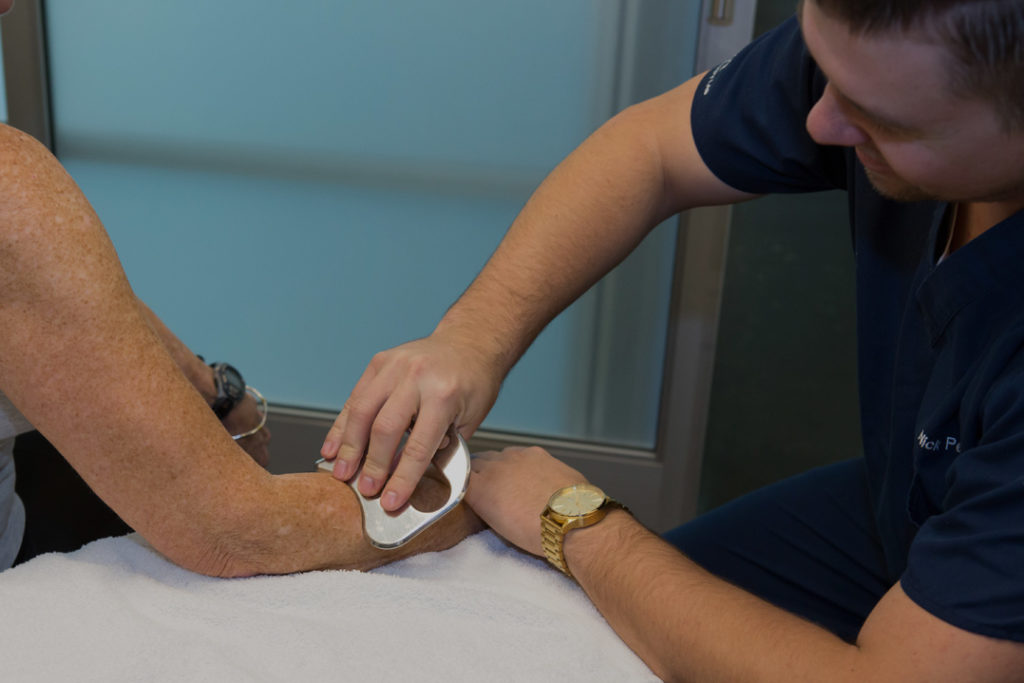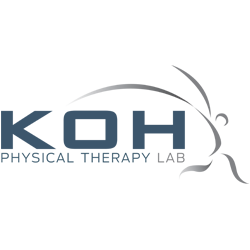Instrument Assisted Soft Tissue Mobilization is an effective treatment for muscle, ligament and tendon injuries.
What is Instrument Assisted Soft Tissue Mobilization?
Instrument Assisted Soft Tissue Mobilization (IASTM) is rapidly growing in popularity due to its efficacy and efficiency, while remaining non-invasive.
IASTM is another option to resolve pain and tightness in the body. It utilizes specifically designed instruments in order to easily detect and treat fascial dysfunction. These instruments work to magnify abnormalities, such as scars, restrictions, and adhesions in the fascia, making it easier to locate and treat the area. The use of instruments limits friction, resulting in certain precision, depth, and sensitivity that cannot be accomplished with hands, knuckles, or elbows.
How does Instrument Assisted Soft Tissue Mobilization work?
Instrument Assisted Soft Tissue Mobilization (IASTM) incorporates a patented form of instrument assisted soft tissue mobilization that enables clinicians to effectively detect and treat scar tissue and restrictions that affect normal function. The technique separates and breaks down collagen cross-links; splays and stretches connective tissue and muscle fibers.
Utilizing IASTM techniques also allow for an increase in the rate and blood flow to and from the area, as well as increasing the cellular activity in the region. The goal of IASTM is to trigger an inflammatory healing response, stimulating the production of collagen as well as proper and pain-free healing.

How effective is IASTM?
There has been an abundance of work published supporting the use of IASTM for treatment of various conditions.
Extensive research has been done to prove the efficacy of IASTM as a viable treatment option for many different conditions. It is believed that this approach can alleviate pain and improve function within three months or less. One study reported remarkable and significant results when participants with chronic plantar fasciitis received Graston Technique® over six weeks vs. those that received massage or no treatment. 1
Another study showed that IASTM to the back of the shoulder can increase passive shoulder range of motion in collegiate baseball players. Not only does it benefit those with injuries, but even uninjured individuals who use this technique are likely to experience an increase in their range of motion while reducing pain and improving patient-reported function.
Sources
https://www.ncbi.nlm.nih.gov/pmc/articles/PMC5331993/
https://www.ncbi.nlm.nih.gov/pmc/articles/PMC5039777/
What is scar tissue?
Scar tissue is a dense, fibrous tissue that affects everyone. It is an underlying factor in many injuries as the collagen proteins grow in a single direction, making the tissue less elastic compared to healthy skin. As scar tissue builds, muscles become shorter and weaker. This can lead to a reduction in range of motion, loss of strength, pain, tingling, weakness, and numbness.
There are two different ways that scar tissue can form. The first way is if a muscle, tendon, or ligament is torn or crushed. The body forms scar tissue in order to “glue” together the torn pieces as scar tissue is a necessary part of the healing process.
The second way that scar tissue is formed is by soft tissue in the body not receiving enough oxygen, also known as hypoxia. Hypoxia is more common than one may think. Poor posture, athletic pursuits, repeated use, and sustained pressure, like sitting, increase muscle tension and result in hypoxic conditions. When muscle tension is increased, blood supply to the area is reduced. Blood flow is essential as blood carries oxygen to the muscles and a reduction in blood flow means less oxygen, resulting in hypoxia. This can lead to free radicals accumulating in muscles. These free radicals attract cells that produce scar tissue. After time, scar tissue begins to affect the surrounding muscles, tendons, ligaments, fascia, and nerves.
Benefits of Instrument Assisted Soft Tissue Mobilization
- Decreases overall time of treatment
- Allows faster rehabilitation/recovery
- Reduces need for anti-inflammatory medication
- Resolves chronic conditions thought to be permanent
- May resolve chronic conditions thought to be permanent
- No downtime
IASTM technique can be effective in treating the following conditions
- Cervical sprain/strain (neck pain)
- Lumbar sprain/strain (back pain)
- Carpal tunnel syndrome (wrist pain)
- Plantar fasciitis (foot pain)
- Lateral epicondylitis (tennis elbow)
- Medial epicondylitis (golfer’s elbow)
- Rotator cuff Tendinitis (shoulder pain)
- Patellofemoral disorders (knee pain)
- Achilles tendinitis (ankle pain)
- Scar tissue
- ITB syndrome
- Adhesions
- Trigger finger
- Shin Splints
- Plantar fasciitis
- Post-surgical scarring
At Koh PT, we use the most effective modalities from all around the globe to ensure optimal healing. Some of these therapies include ShockWave Therapy, Therapeutic Taping, Fascia Stretching, and Cold Laser Therapy.
CBD Infused Therapy
When appropriate we offer CBD-infused cream to aid in therapy. By stimulating the Endocannabinoid System (ECS), CBD promotes homeostasis, reduces pain sensations, and decreases inflammation where applied.
Benefits of CBD for pain management:
- Natural pain relief
- Aids in muscle relaxation during physical therapy
- May help reduce anxiety and stress
- Non-intoxicating and non-habit forming
IASTM courses for physical therapists and other clinicians
Learn the latest IASTM techniques and expand your scope of practice with out IASTM 2.0 Specialist Course.
Improve patient outcomes and boost your career with a IASTM course. Click here to learn more and register today.
